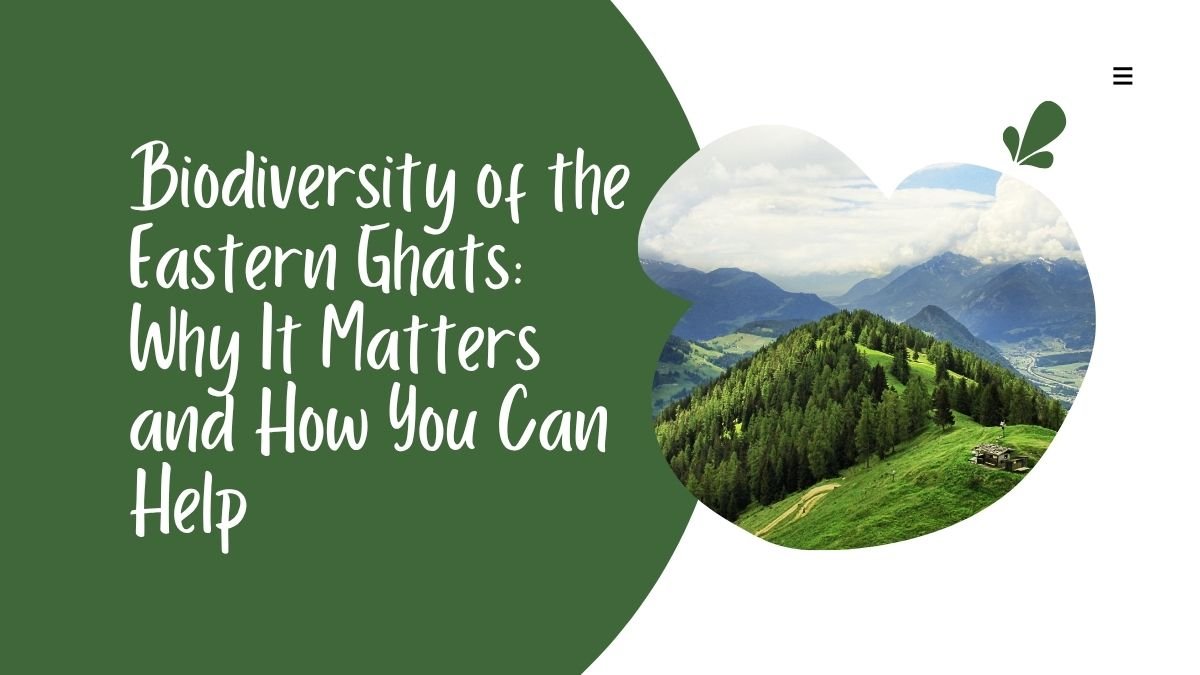The Eastern Ghats range spread along the eastern coast of India is one of the oldest and most biodiversity-rich regions of the country. These hills extend for about 1750 km from Odisha in the north to Andhra Pradesh and Tamil Nadu. Although they are not a continuous range like the Western Ghats, they are no less than a treasure from the point of view of nature.
Here we will know in detail why the biodiversity of the Eastern Ghats is important, what are the threats surrounding it and what can the common citizen contribute to it.
Importance of Biodiversity of Eastern Ghats
- Rich forest wealth
Many types of forests are found in the Eastern Ghats such as dry evergreen forests, semi-evergreen forests, tropical dry deciduous forests, thorny forests and sub-Himalayan hill forests. Biodiversity has flourished here due to many small and big rivers and natural sources. - Diverse Flora
The region houses about 13 percent of India’s flowering plant species. More than 3000 types of flowering plants are found here, of which more than 100 species are found only here.
For example, rare plants like ‘Hinsa’, ‘Tamarasa’, and ‘Harita’ grow naturally in these hills. - Rich Fauna
The Eastern Ghats provide natural habitat for many species like elephant, leopard, Indian Gaur (Bison), bear, deer, wild boar, mongoose, jackal, cat.
Reptiles include python and monitor lizard, while about 290 species of birds and more than 4000 insect species are found here. - Irrigation and Water Sources
About every year, the north-east monsoon is that time when the hill area receives an annual rainfall of about 1,000 mm. It is this that forms many rivers, such as Chaiyaru, Amrithiyaru, Mriganda, Penyaru and Kaveri-from here, they spread out to bring life-filling waters to the fields under these hills. - Tourism and Culture
Waterfalls like Megham Falls, Beeman Falls not only make agriculture fertile but also promote tourism. Traditional tribal culture and forest-based livelihood have also been preserved in these areas.
What are the threats to the Eastern Ghats?
- Deforestation
Taking advantage of legal loopholes, rare trees here, especially sandalwood trees, have been illegally cut by the timber mafia. This has caused the water level of the rivers to fall and biodiversity is decreasing. - Mono-cropping
Due to not getting proper prices from traditional farming, many tribal farmers are now dependent only on single crops like tapioca, which is reducing the fertility of the soil. - Plantation Invasion
Coffee, tea and fruit plantations have been set up on a large scale in many parts of the Eastern Ghats. Shady trees planted for these plantations such as Silver Oak are also being cut down, destroying the local vegetation. - Invasive Species
Foreign plants such as ‘Poochedi’, ‘Velli Karuvai’ are eliminating local species and disturbing the ecological balance. - Illegal Mining
Bauxite and magnesite have been mined on a large scale in Kolli and Shervarayan Hills. This has led to the destruction of forests and complete drying up of water sources. - Forest fires and pollution
Biodiversity is being heavily damaged by forest fires and pollution from industries every year.
Steps that can be taken for conservation
- Promotion of eco-tourism
By making local people partners in eco-tourism, not only is it possible to provide them employment but also the protection of forests can be ensured. For example, local youth should get employment as a guide and tourists should be aware of the environment. - Eco-development plan
Ecological development plans will have to be made with the participation of local communities, so that there is a balance between forest, animal and human community. - Afforestation
The government and civil society will have to jointly start a reforestation campaign so that the dry hilly areas can regain greenery and biodiversity can get a place. - Strict law and monitoring
Forest acts should be strictly implemented and the number of forest guards should be increased, so that activities like illegal logging and mining can be stopped. - Local education and public awareness
These programs can be conducted through villages and tribal areas to make the people aware of how to live in balance with nature and harmonize their traditions with biodiversity.
Recent research and future directions
Presence of tigers been recently recorded in the northern regions of the eastern Ghat, with many species having been discovered newly. Thus, it can be shown that, given a concrete conservation strategy, the whole area could be restored into an oasis of biodiversity within the country.
How may you help? Purchase local products that are both biologically and ecologically safe. Join or financially support NGOs which work for biodiversity conservation. Spread awareness on social media. Adopt eco-tourism and enjoy being in nature without harming the environment.
Conclusion
The Eastern Ghats are not just a mountain range, but a life-giving force that maintains the ecological balance of our country. It is the responsibility of every Indian to save its biodiversity.
If we do not take thoughtful steps today, tomorrow its beauty will remain only in books.









